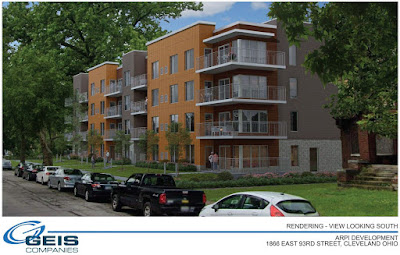** UPDATED MAY 2, 2021 **
After nearly five months since Senate Bill 39 was signed into law by Gov. Mike DeWine, the so-called megaprojects tax credit it authorized still isn't a functioning program. Worse, it won't be functioning before the end of the state's current fiscal year ending June 30, a state official confirmed today.
Unless the program is extended, the delay will leave only two years or just half of the $400 million in authorized credits available for awarding over the program's originally intended four-year lifespan. DeWine signed the Transformational Mixed Use Development (TMUD) tax credit program into law on Dec. 29, 2020.
It will provide $100 million per year in tax credits to large, complex real estate construction or renovation projects, mostly in Ohio's large urban centers, having price tags of $50 million or more. The statute assigns administrative responsibility to the Ohio Tax Credit Authority, part of the Ohio Development Services Agency, to make TMUD credits available, review applications and award the credits according to agency rules.
Nearly five months later, on April 19, the Ohio Development Services Agency posted three pages of draft administrative rules for the TMUD program for the public to review and to submit comments. A public hearing on the proposed rules is scheduled for 9:30 a.m. May 26.
The state's fiscal year, along with the state government's two-year operating budget, or biennium, ends a month later. Todd Walker, chief communications officer for the Ohio Development Services Agency, confirmed the agency would not be able to start awarding TMUD tax credits before June 30.
 |
| With fewer obsolete commercial buildings available for conversion, more urban core housing will have to be built new, requiring new finan- cial resources like the the TMUD tax credit program (KJP). |
"We expect the program will launch in the first quarter of fiscal year 2022," Walker said. He added that the agency "is working diligently to make sure this program will be successful and have a positive impact on Ohio communities."
"We're still working through it," said John Werkman, chief of the Ohio Development Service Agency's Business Services Division during a monthly meeting of the Ohio Tax Credit Authority April 26. "The rules don't cover everything. We're trying to get the program ramped up as quickly as we can."
But Walker noted that the legislature may extend the TMUD program's authorization beyond its current sunset date of June 30, 2023 -- the end of state fiscal year 2023 -- to achieve the originally desired four years of program benefits.
"It is our understanding that the General Assembly is pursuing avenues to carry forward the tax credits allocated to the program for use in future fiscal years," he said.
When asked if unused tax credits from prior fiscal years could be awarded in the present, Walker referred to the statute authorizing the TMUD program.
"The tax credit authority may not preliminarily approve more than $100 million of estimated tax credits in each of fiscal years 2020, 2021, 2022, and 2023," Walker said in quoting the statute. "Meaning, that the approval of the tax credit amounts for projects by the authority is to be made in those fiscal years and limited to $100 million in each of those fiscal years."
There is a carry-forward provision in the law which, the bill's original sponsor Senator Kirk Schuring (R-29, Canton) said might allow the $100 million in tax credits in FY2020 and the current fiscal year to be awarded after June 30. But Walker disputed that.
"The carry-forward provision you referenced applies to the use of the credit by a person/entity that receives the credit, once a preliminarily approved project is completed, if the credit amount for the person/entity exceeds the applicable tax liability for the period the certificate is issued," Walker said.
Prior to publication of this article, Schuring did not respond to a phone message, a text message and an e-mail seeking further comment, including whether he might seek corrective legislation to change the four-year TMUD program's inaugural fiscal year from 2020 to 2022.
A TMUD credit cannot be claimed until the project, or a portion of a large project that is planned to be completed in phases, is completed. Thus, in any case, state officials said they do not anticipate revenue losses to the Ohio treasury before fiscal year 2022.
Most new residential inventory that's been added in downtown Cleveland this century was carved out of historic buildings that were considered obsolete for modern commercial uses. State and federal historic tax credits completed their capital stacks to renovate and convert those buildings.
 |
| The project that started it all -- nuCLEus. Stark Enterprises sought the TMUD program to close a financing gap in its long-planned downtown Cleveland project (Stark). |




































